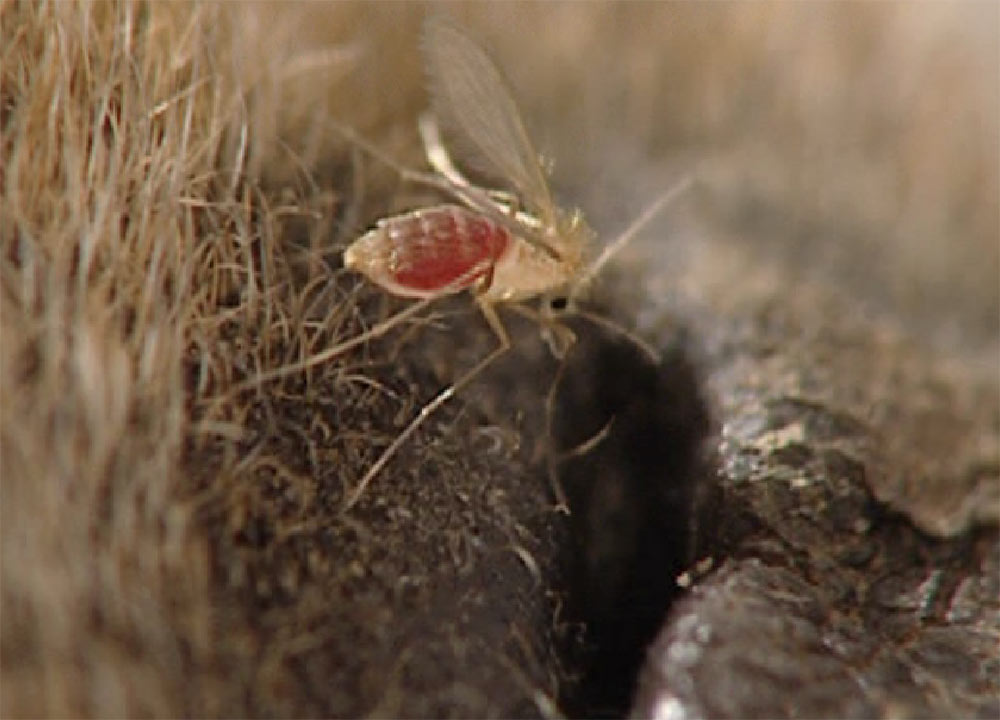Etiology and Epidemiology (Distribution, Transmission)
Leishmania infections in dogs are predominantly due to Leishmania infantum. However, other species of Leishmania may also infect dogs (most important species in dogs, their distribution and hosts are described in Table 1). Many species of Leishmania infect both humans and animals and are zoonotic.
The information in these guidelines is focused only on infection and disease due to L. infantum. This agent has a very wide distribution including the Mediterranean Basin, parts of Asia, and the Americas.
Leishmania spp. and more specifically L. infantum infection are typically transmitted by specific species of “insect vectors” belonging to the phlebotomine group (also called “sand flies”). These vectors represent the major route of transmission in endemic areas. The presence and activity of sand flies belonging to species competent for transmission defines the places where the infection or disease can be “endemic” in human and animal populations, including domestic dogs.
The vectors may transmit Leishmania infection to animals species other than human or dogs and a continuously increasing number and diversity of mammal species have been reported as infected including domestic (i.e. cat) or wildlife (i.e. rodents) both in rural and sylvatic environments or captive in zoos. At least some of these species are also active reservoirs with ability to be a source of infection for sand flies and consequently drive transmission of the infection to other receptive species. This results in a situation in which infected domestic dogs may represent, amongst others, a risk for human infection.
Non-vectorial transmission routes have also been demonstrated (sexual, vertical and blood transfusion). These modalities are far from being negligible and have been demonstrated in dogs. The non-vectorial transmission modalities may have a major impact in “non-endemic areas” where vectors are absent or present in very small numbers. In those areas, Leishmania infection may maintain mainly in and from stable foci. Non-vectorial transmission considerably extends the global distribution of the parasite and the potential concern for veterinary practitioners. As a consequence, the importation of infected animals from endemic areas may be the reason for the development of disease foci in non-endemic areas.
Table 1. The most significant species of Leishmania known to affect domestic dogs
| Species Genus | Distribution | Hosts | Zoonotic aspects |
| L. infantum | Mediterranean Basin, Middle East, South America (Brazil), parts of Asia (China, Central Asian Republics) Increasing in non-endemic countries (Europe, USA, South and Central America from Mexico to north Argentina) | Many groups of mammals found infected when looked: canids, felids, mustelids, rodents, rabbits and hares, bats, marsupials, humans, etc. | Visceral, cutaneous and mucocutaneous leishmaniosis |
| L. major | Southern Mediterranean Basin, Middle East, Arabic peninsula, central Asia to India, western/eastern Subsaharan Africa | Mostly wild rodents, occasional in carnivores, humans | Visceral, cutaneous and mucocutaneous leishmaniosis |
| L. tropica | North Africa, Balkan countries, Middle-East to central Asia, eastern Africa and Arabic peninsula | Humans (“anthroponotic”), rodents (hyrax in Middle East) | |
| L. braziliensis | Central and South America | Rodents, equidae, carnivores, humans | Cutaneous and mucocutaneous leishmaniosis |
Several other species have been detected in dogs with still limited information on their importance (L. amazonensis, L. mexicana, L. peruviana, L. panamensis). Concerning South American species, please visit Brasileish’s group website (www.brasileish.com.br).
Leishmania donovani infection in India and east Africa is typically anthroponotic (the disease is also called Kala Azar). The role of animals in L. donovani infection remains to be investigated.
Infection in the canine population in endemic areas is widespread, and the proportion of infected dogs is much higher than that of dogs with clinical leishmaniosis. Therefore, subclinical infection is common in endemic areas (clinically healthy infected dogs). Nevertheless, CanL is also often diagnosed in non-endemic countries (dogs imported from or travelling to endemic areas).
Susceptibility is related to the ability of the host to mount a protective specific immunity. A strong cellular immunity results in long term control of infection in resistant dogs. On the contrary, the development of an intense humoral response drives non-protective immunity which in return is largely responsible for clinicopathological disorders and clinical signs in susceptible dogs.

